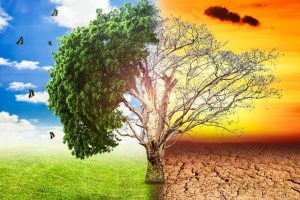The Biotech KISAN-HUB project (at West Bengal University of Animal and Fisheries Sciences, Kolkata), with financial support from the department of biotechnology, government of India, organised a programme for farmer–scientist interaction and animal support with selected marginal farmers from five aspirational districts: Birbhum, Nadia, Murshidabad, Malda and South Dinajpur of West Bengal, held on 22nd July, Monday, this year at VCI Auditorium, West Bengal. The farmers–scientists interaction meeting was inaugurated by Shri Swapan Debnath, minister-in-charge, animal resources development department, govt. of West Bengal. Shri Chandranath Sinha, minister-in-charge of small and medium textile industries, government of West Bengal, was present at the programme. Hema Tripathi, associate director extension, Sher-e Kashmir University of Agriculture Sciences and Technology, Jammu, graced the programme. Tarannum Sultana Mir, Sabhadhipati, Nadia District, Dr Mosharef Hussain Sarkar, MLA, Murarai, Birbhum, Janab Reyat Hossain Sarkar, Bhagbangola, Murshidabad, were the guests of honour, and the honourable vice-chancellor of the West Bengal University of Animal and Fisheries Sciences, Shyam Sundar Dana, presided over the function.
The programme was divided into two parts. During the first part, the inauguration ceremony was accomplished, and then, with the consent of minister Swapan Debnath, the beneficiaries selected from five potential districts (Birbhum, Nadia, Murshidabad, Malda and South Dinajpur) were distributed with superior-quality Bengal black goats, Vanraja chicks and Indian major carps. The second part of the programme started by welcoming the guests. Keshab Chandra Dhara, the principal investigator of the project, presented a welcome speech. After this, different booklets, along with the farm journal, Kisan Barta, published by the project, were opened by the honourable chief guests.
Advertisement
“After agriculture, animal husbandry and fisheries are the biggest contributors to employment. Both the central and state governments have already come forward, but West Bengal chief minister Mamata Banerjee has given a lot of importance to animal husbandry to create more employment opportunities. Animal husbandry is the second largest area of self-reliance after agriculture,” Swapan Debnath said.
Chandranath Sinha appreciated the chief minister’s initiative and said in his speech, “Our chief minister repeatedly says that girls should also be self-reliant. Girls should also come forward. Women will also come forward and advance the development of Bengal. She is doing self-help groups for women just as she is brainstorming for men. The school dresses that we are providing through small cottage industries are being manufactured through self-help groups. We are working as much as possible in all the departments, including the fisheries department, the animal resources department, and the small cottage industries department, so that we can develop the whole of West Bengal.”
The vice-chancellor of the university, Professor Shyam Sundar Dana, said, “We have done some work in our university. In 2023, I got the best result in the Eastern zone at this university. Even in the Ed ranking, this university has occupied the 10th position. Moreover, a few days ago, a very big university from Germany collaborated with this university. The proudest thing is that they approached the Indian Veterinary Institute, the Veterinary University of Tamil Nadu, another veterinary university, but they gave responsibility to our university. To handle all these tasks. This has been made possible by the combined efforts of the students and staff here.”
Hema Tripathi, associate director, extension, sciences and technology, Sher-e-Kashmir University of Agriculture, Jammu, highlighted the importance of animal husbandry, saying, “Apart from agriculture, the government has looked at cattle rearing today so that people can find a way to earn income from this field which is being done in business form. Today, many young people are fleeing farming and moving to cities. Every day, 2,000 youths flee from villages and come to cities. When they go there, they work as labourers or drive rickshaws. Today, the government launched the AAY (Anthdaya Anna Yojana) scheme to make animal husbandry more attractive. The village is our centre of work. There, we are providing very advanced technology. The youth have to come forward in this regard.”
Keshab Chandra Dhara, principal investigator of the project, mentioned in his welcome address that “the University of Animal and Fisheries Sciences goes ahead to enrich the lives and livelihoods of the people in remote villages. Regarding this, we have established the Biotech KISAN Hub in the five aspirational districts of West Bengal and have reached out to lakhs of people in the districts. We started this journey in the Sundarbans on 5 March 2017. In the next phase, we have started our activities in the five aspirational districts of West Bengal. People can be furthered through livelihoods that can be combined between goat rearing, fish farming and poultry farming. Especially through such employment that enriches their livelihood, and our aim is to make female farmers self-reliant. If women are self-reliant, the family becomes progressive. I have worked for the past seven years in collaboration with the government of India and the government of West Bengal. We want to take this work forward with the local representatives. I will provide 200 goats in each of the aspirational districts, i.e., 1,000 goats in total, chickens and fish to each district every year. Some of those beneficiaries will be trained with the help of talented teachers at the university. Protect the input support given by the government, as it is your wealth.”
Twelve farmers among the trained beneficiaries of the five aspirational districts under this scheme were presented with the “Best Farmer Award”. The main objective of the Biotech KISAN Hub is to spread scientific technology. Various programmes have been undertaken for the backward animal and fish farmers in West Bengal. Among these programmes, one is to provide input support for the animals and training on scientific methods of animal and fish farming. Not only the distribution and training but also the regular contact with the animal keepers, the vaccination of various animals, and the treatment of diseases have extended the helping hand in various ways. Various social media platforms, like Facebook, WhatsApp, YouTube channels and mobile apps, have created a platform to connect with farmers. Moreover, Kisan Barta, a farm journal published by this project at a fixed interval of days, has also gained immense popularity among marginal farmers. Around 300 farmers and 50 university faculty scientists, students, and government officials from five potential districts have been a part of the programme to link available science and technology, for which the entire programme has achieved a different level of success. In the end, Shyam Sundar Kesh concluded this auspicious event by thanking all the guests.











